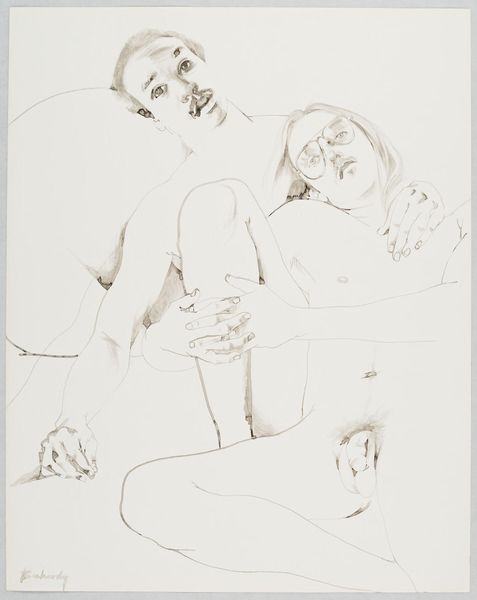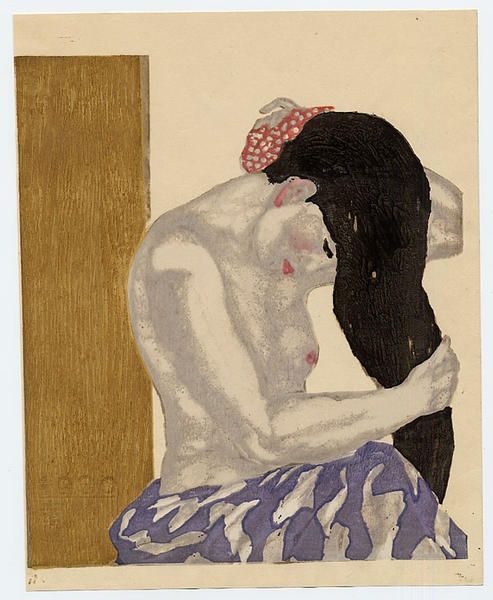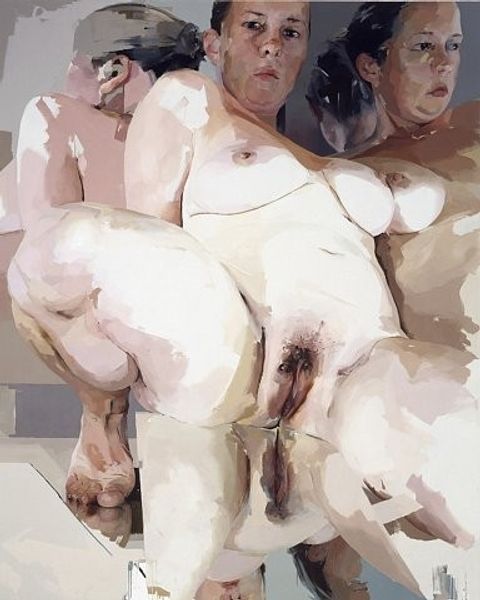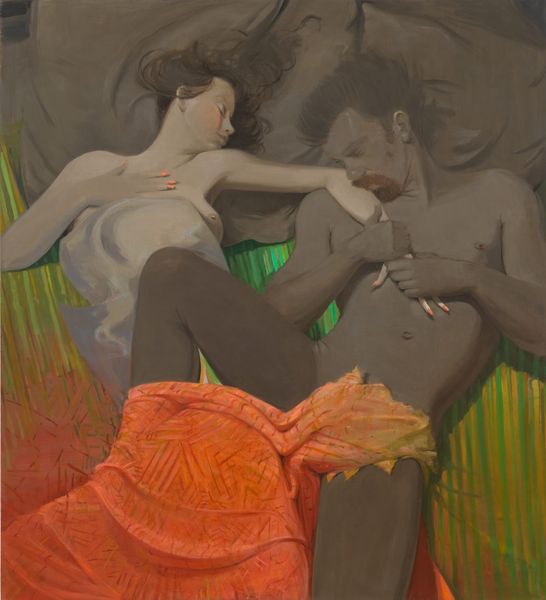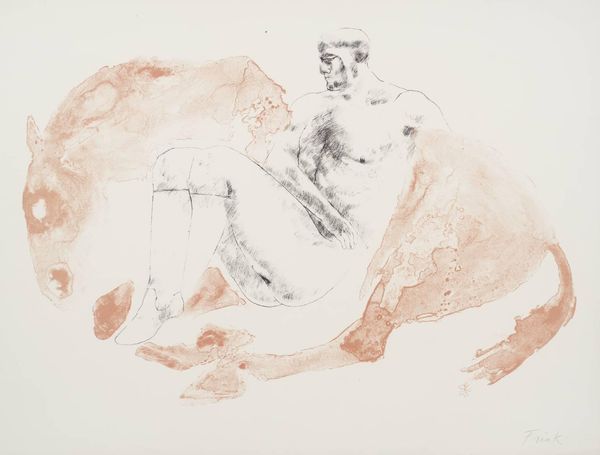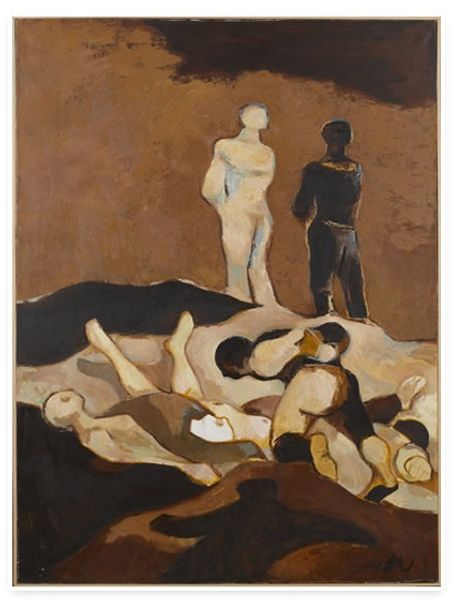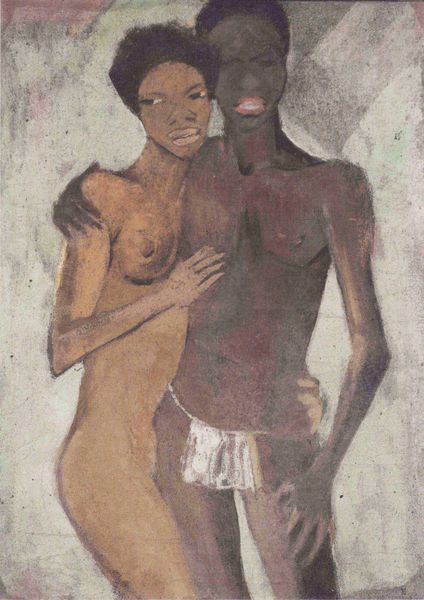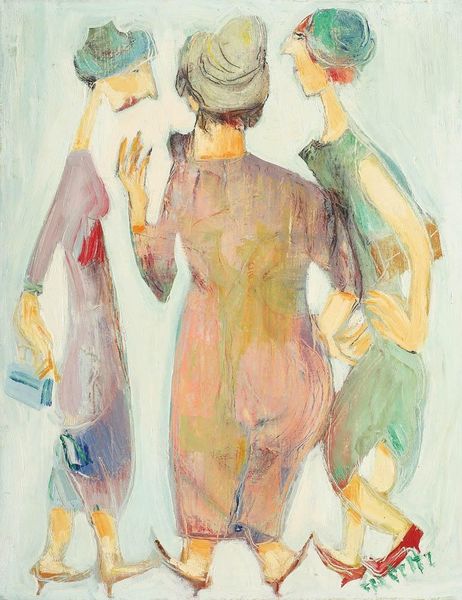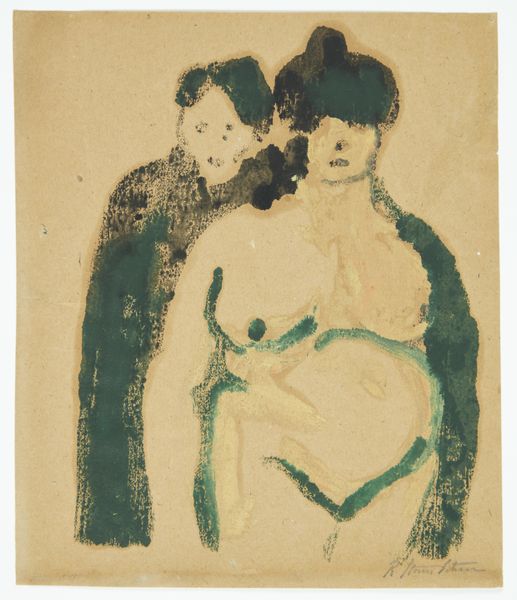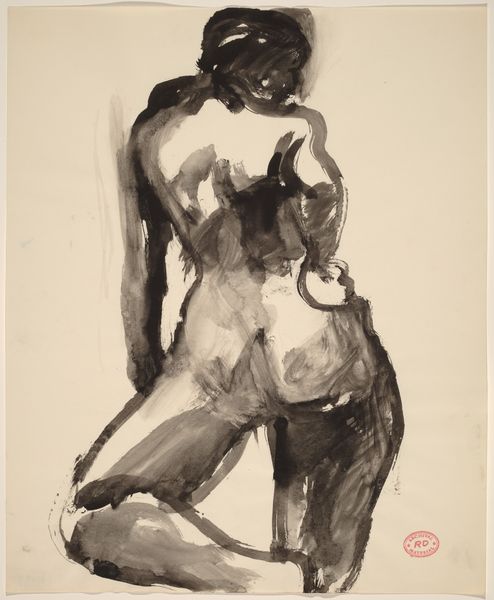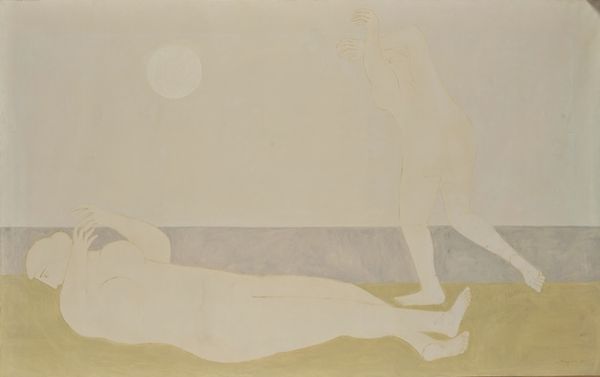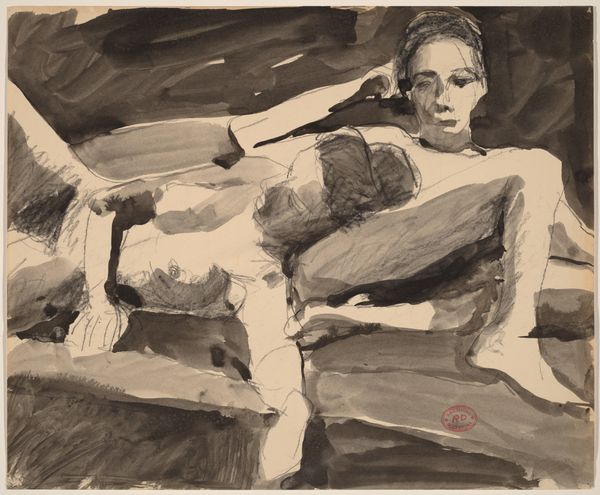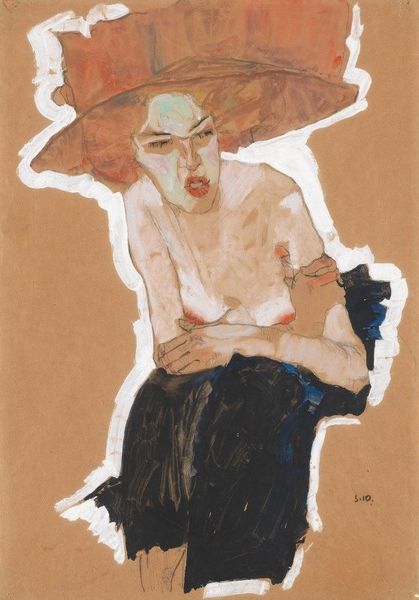
painting, oil-paint, acrylic-paint
#
contemporary
#
narrative-art
#
painting
#
oil-paint
#
acrylic-paint
#
figuration
#
oil painting
#
acrylic on canvas
#
neo-expressionism
#
identity-politics
#
portrait art
Dimensions: overall: 182.88 × 152.4 cm (72 × 60 in.)
Copyright: National Gallery of Art: CC0 1.0
Curator: Kim Dingle’s "Black Girl Dragging White Girl," painted in 1992. It’s oil and acrylic on canvas. The title really grabs you, doesn't it? Editor: Absolutely. My first impression is…uncomfortable. There’s something unsettling in the implied violence, but also in the depiction of children. They are in frilly white dresses, and the setting, a simple brown background, intensifies the raw emotion, wouldn't you say? Curator: It's as if we're looking at a staged scene. These aren’t your sweet, innocent little girls; they seem to be engaged in this battle for power and control, maybe echoing societal dynamics? I always found that so fascinating: using children to talk about such complex subjects. The smeary strokes are kind of gorgeous. Editor: Right, it pulls in those neo-expressionistic themes, challenging idealized images of childhood. It invites reflection on race and class. There’s also an inherent question of female agency. Are we meant to see the Black girl as dominant, or are we dissecting a power structure born from the historical context of racial oppression, inverting the typical depictions of children, and girlhood, as these beings needing constant protection and who are always seen as being very "good"? Curator: Yes! I love that duality! Are they playing? Is it serious? That ambiguity lets your mind fill in the narrative, makes it feel more visceral. Even the unfinished quality heightens that sense of something raw and immediate. What a weird fever dream that evokes so much tenderness and rage. It really tickles my brain! Editor: This deliberate tension between sweetness and aggression serves to reveal the ways in which these power dynamics impact children, especially the bodies and self-awareness of young Black girls, from such a young age. A question Dingle's work asks that can be extrapolated to how contemporary visual media often flattens and misrepresents Black girlhood. Curator: I feel that it becomes a metaphor, a playground for the adult themes. Editor: Ultimately, Dingle pushes us to reflect on who benefits from childhood innocence, and how concepts such as race or power inevitably shatter it. Curator: Yeah! These images remain imprinted. Even though sometimes it makes us squirm a little bit in the presence of such tenderness! Editor: It urges a critical viewing—that’s for sure. Let us not accept, or project, traditional power structures into the space of playing.
Comments
No comments
Be the first to comment and join the conversation on the ultimate creative platform.

